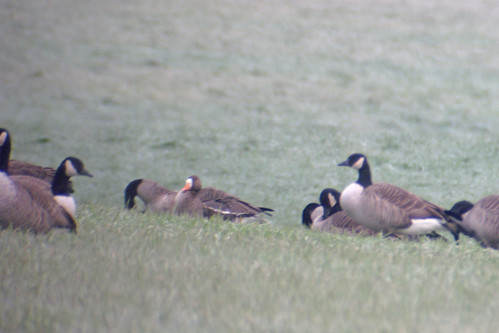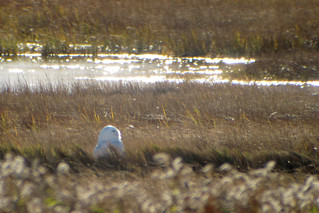A field of golden rod and a green forest canopy greeted students upon their arrival at Forest Preschool this Fall. A landscape, covered in a soft blanket of snow, offered a frosty goodbye at the end of our session. In a classroom without walls, children intimately connected to their natural surroundings and witnessed the wild world around them shift from summer, into fall, and then into winter. Over the session, I and my teaching assistant witnessed the children thrive outdoors while guiding them through their own developmental seasons. The children joyfully played and directly engaged with their natural environment, enthusiastically learning about themselves, others, and their world. Play is central to early childhood development and to our Forest Preschool Program. Play in natural spaces coupled with the room and ability for children to be active in their own learning process forges a strong combination. It stimulates wonder and excitement, allowing for possibility, and sets the stage for students to develop into citizens of our planet.
 There are several newfangled phases to describe children being active in their own learning process. I have unabashedly used one in the title of this blog: child-driven. Another term is emergent curriculum. I have used this term to describe the curriculum we use here at Forest Preschool. But, really, this fancy word means that our curriculum is not contained by a specific plan but, rather, is attentive to each child, their interests, and what the natural world has to offer on any particular day. Although we model simple ideas for play and provide art and natural materials to stimulate curiosity and imagination, it is the interest of the children that drives their activity and potential projects. I would like to take you on a tour of some of the highlights from our session this Fall.
There are several newfangled phases to describe children being active in their own learning process. I have unabashedly used one in the title of this blog: child-driven. Another term is emergent curriculum. I have used this term to describe the curriculum we use here at Forest Preschool. But, really, this fancy word means that our curriculum is not contained by a specific plan but, rather, is attentive to each child, their interests, and what the natural world has to offer on any particular day. Although we model simple ideas for play and provide art and natural materials to stimulate curiosity and imagination, it is the interest of the children that drives their activity and potential projects. I would like to take you on a tour of some of the highlights from our session this Fall. One morning we laid out many sticks from shortest to longest. We did so in order to provide inspiration for children to arrange sticks by length if they were drawn to do so. What happened next, when a child joyfully skipped over, was unexpected and interesting. The child immediately picked up another stick from the ground and stroked along the arrangement to see if the different sized sticks made sounds similar to a xylophone. Because this child and several others are drawn to make music, work with their hands, and sort natural items, we embarked on a multi-week adventure, making a musical instrument out of varying lengths of sticks.
One morning we laid out many sticks from shortest to longest. We did so in order to provide inspiration for children to arrange sticks by length if they were drawn to do so. What happened next, when a child joyfully skipped over, was unexpected and interesting. The child immediately picked up another stick from the ground and stroked along the arrangement to see if the different sized sticks made sounds similar to a xylophone. Because this child and several others are drawn to make music, work with their hands, and sort natural items, we embarked on a multi-week adventure, making a musical instrument out of varying lengths of sticks. The first step in our project was to introduce the idea of using a saw to assist in cooperatively creating a musical instrument. A discussion about using saws safely ensued. I asked the group if anyone would like to saw sticks in order to make an instrument. Several hands were eagerly raised. Once the children passed a safety test, and with proper supervision, we set to work sawing sapling tree trunks into different lengths of sticks.
The first step in our project was to introduce the idea of using a saw to assist in cooperatively creating a musical instrument. A discussion about using saws safely ensued. I asked the group if anyone would like to saw sticks in order to make an instrument. Several hands were eagerly raised. Once the children passed a safety test, and with proper supervision, we set to work sawing sapling tree trunks into different lengths of sticks.  The next week, during circle time, I asked if anyone was interested in arranging our previously cut sticks from shortest to longest, then threading p-cord through drilled holes, and tying them on to a larger and thicker length of a branch. Again, several hands eagerly raised and waved with enthusiasm. P-cord was threaded, knots carefully tied, and a chiming instrument was made. Many children were eager to experiment with the newly made instrument and explore the different sounds each length of stick made. Through the entire process, children worked on developing their fine motor skills and ability to work cooperatively.
The next week, during circle time, I asked if anyone was interested in arranging our previously cut sticks from shortest to longest, then threading p-cord through drilled holes, and tying them on to a larger and thicker length of a branch. Again, several hands eagerly raised and waved with enthusiasm. P-cord was threaded, knots carefully tied, and a chiming instrument was made. Many children were eager to experiment with the newly made instrument and explore the different sounds each length of stick made. Through the entire process, children worked on developing their fine motor skills and ability to work cooperatively. 

Mud Kitchen is a hot spot for child-driven play and learning. We have a wonderfully wet and muddy place in the woods at our base camp that has been transformed into a Mud Kitchen. With simple kitchen tools such as pots, pans, ladles, wire whisks, etc., Mud Kitchen ignites imaginations and provides a rich environment for exploration and learning.
After we finish our circle and snack time, children can choose where they would like to be and what they would like to do in the forest and fields. Many children are drawn to Mud Kitchen, where they become scientists conducting experiments and chefs baking up a storm. A myriad of delicious concoctions are made using a variety of natural material and offered to fellow students and teachers. Birthday and pizza cakes are favorites. While engaging in this play, imaginations are developed. But also, soil science, chemistry, water flow, and skills for cooperative play are learned! Really, the learning is endless. Through an inquiry based style of teaching, children learn where water goes when the rain water dries, who lives in this habitat, what happens to the water when it's cold. When the temperatures drop, but before ice forms, children build resilience and develop self care skills, learning how to regulate their warmth and comfort level.
 When parents and caregivers arrive at the end of the morning for pick-up, they are often met by happily dirty and muddy children - evidence of a good day. Through their play and child-centered learning in natural spaces, the youngsters at Forest Preschool are developing foundational life and learning skills with joy, excitement, and a sense of wonder. The soil in the forest is rich, growing endless possibilities in a classroom without walls.
When parents and caregivers arrive at the end of the morning for pick-up, they are often met by happily dirty and muddy children - evidence of a good day. Through their play and child-centered learning in natural spaces, the youngsters at Forest Preschool are developing foundational life and learning skills with joy, excitement, and a sense of wonder. The soil in the forest is rich, growing endless possibilities in a classroom without walls.




